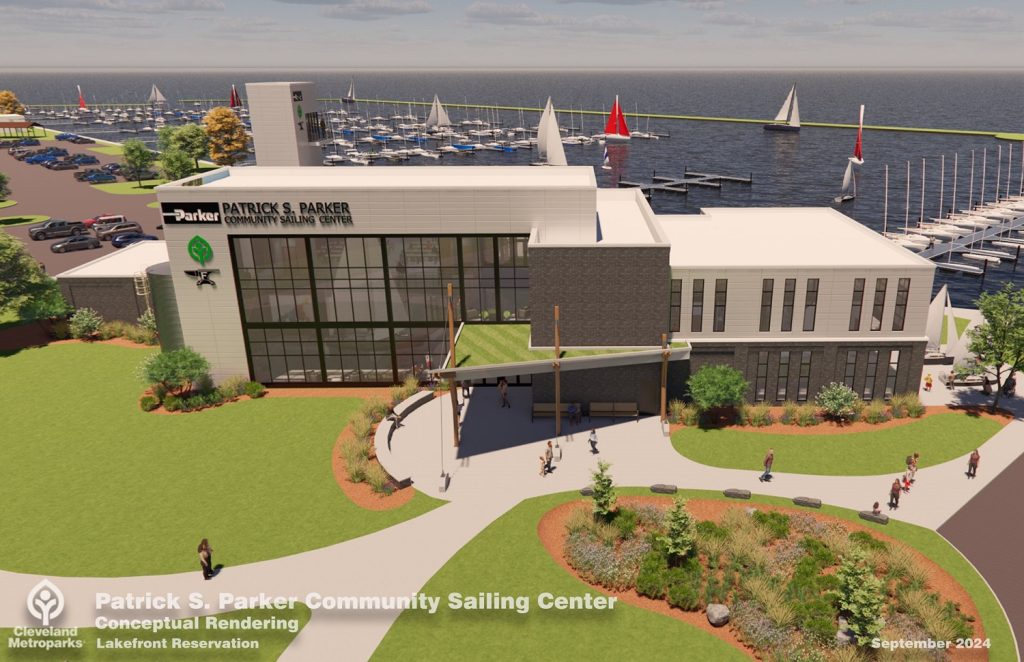When it comes to describing Ohio’s economy, there’s the 3Cs and then there’s everyone else. With a few exceptions, if you want to find a job in Ohio, the best place to look is Ohio’s three largest metropolitan areas — Columbus, Cincinnati and Cleveland.
Consider that, since the start of 2015, Ohio has gained 227,000 jobs, according to the U.S. Bureau of Labor Statistics. The 3Cs accounted for 216,000 of those new jobs.
But it gets more compelling than that. If you add in the employment data from Ohio’s next three largest metro areas — Dayton, Toledo and Akron — the employment in the state’s six largest metro areas grew by 245,000 jobs.
In other words, Ohio would have lost 18,000 jobs in the last five years if it wasn’t for Ohio’s largest metro areas. It’s safe to say that Ohio’s six largest metro areas and especially its three largest are carrying the state’s economy.
And the 3Cs are sustaining their near-decade-long momentum based on the job growth numbers displayed in the charts posted at the bottom of this article. I began to research that momentum when I wrote an article last month about Cleveland’s documented $1.25 billion growth in individual taxable incomes since 2016.
But Cleveland’s newfound job growth (after the prior decade’s job losses) was doubled by that of Columbus and Cincinnati. All three cities are seeing billions of dollars of real estate investment pouring into their urban centers.
And it’s not limited to their downtowns. Long-neglected neighborhoods like Cleveland’s Hough, Cincinnati’s Over-The-Rhine and Columbus’ Olde Towne East are seeing investment unlike any era since the 19th century.
While demographers have coined the term “Fifth Migration” to describe the flood of Millennials and, to a lesser extent empty-nesters into America’s larger urban centers since before the 2010s, it appears there is another demographic contributing to this ongoing migration pattern more recently.
The new urban migrant is the former small-town and rural resident who is fleeing conditions ranging from stagnant or declining job prospects, to the agglomeration of agribusiness, to the closing of small-town/rural hospitals, to the relatively poorer quality of Internet connections.
The Fifth Migration was detailed in a 2016 report by The Center for Population Dynamics at the Maxine Goodman Levin College of Urban Affairs at Cleveland State University (CSU).
To put this migration into context, the CSU report said the First Migration was the pioneers that settled North America; the Second Migration from farms to the factory towns; the Third Migration to the great metropolitan centers like Cleveland; and the Fourth Migration to the suburbs of these centers.
With the apparent movement of rural Ohioans to its larger cities (and to other cities nationwide), this migration pattern has much in common with the second and third migrations from the mid-1800s to the early 1900s.
Another factor in this migration pattern that has not been seen in past decades (at least, not since the early 1800s) is the movement of employers and residents from more expensive coastal cities to large, albeit less expensive cities in Ohio. NEOtrans documented this in articles in early 2018 and again in late 2018.
Ohio’s 3Cs have big-city amenities without the expense of the coastal cities. As a visitor to Ohio once remarked, “Cleveland is the smallest big city I’ve ever visited and Cincinnati is the biggest small town I’ve ever visited.”
Ohio’s declining small-city, small-town and rural employment situation along with its growing larger metro areas has some important political considerations locally, statewide and nationally as well.
While Cleveland has always been a center of strength for the Democratic Party, Columbus and Cincinnati were not. That is changing. Today, more Democrats are getting elected to municipal and county positions in Greater Columbus and Cincinnati.
But, as more rural residents move to Ohio larger cities, will these cities change the views of these new arrivals or will these migrants change the electorate’s voting patterns in Ohio’s larger cities? And it remains to be seen how these changes will affect statewide issues like gerrymandering, education and transportation investments or national matters like future presidential races.
Here is a summary of Ohio’s employment situation, shown first in numbers and then in charts. Here is the change in employment in Ohio’s metro areas over the past five years when Ohio’s largest metros increased their employment momentum and all other parts of Ohio either stagnated or declined:
CHANGE IN EMPLOYMENT IN PAST 5 YEARS
STATEWIDE
Ohio +227k
OHIO’S SIX LARGEST METROS
Columbus +88k
Cincinnati +85k
Cleveland +43k
Dayton +17k
Toledo +7k
Akron +5k
EVERYONE ELSE
Wheeling +3k
Canton +2k
Lima +1K
Mansfield 0
Springfield -1k
Huntington -3k
Steubenville -3k
Youngstown -9k
Here are charts showing the changes in employment in Ohio’s metro areas in the past decade:
END
- Haslam email preempts City, County at stadium debate
- NE Ohio projects get historic wins from tax credits
- Haslams announce Brook Park stadium-area development partner, updated plans
- Old Brooklyn structures OK’d for demolition
- Shoreway Tower has construction in view for 2025
- North Collinwood ‘historic’ modular townhomes OK’d













Cleveland is carrying Ohio's economy by itself actually 1/3 of America's economy in contained in just 31 counties and Cuyahoga being the only Ohio county on that list is anchored by the city of Cleveland
1) i don't see what this has to do with passenger rail. 2) Your analysis of growth in the "cities" is somewhat flawed. Population in the City of Cincinnati has grown at 1.5% annually since 2010, but the suburbs grew by double that rate, and of the 15 counties in the Cincinnati Metro area, Hamilton County (where Cincinnati is located) grew the slowest. "The Census estimates, which come out every year, show the city's population has increased about 4,500, or 1.5 percent, since the 2010 Census.
Growth in the suburbs continued at a much faster pace, particularly on the West Side and in Northern Kentucky. Harrison, Alexandria, Independence and Harrison Township led the way with population increases of 10 percent or more since 2010.
The Cincinnati metro area, which includes 15 counties in Southwest Ohio, Northern Kentucky and Southeast Indiana, grew by 3 percent between 2010 and 2017. Boone County tops the list at 9.5 percent and Hamilton County is at the bottom with 1.4 percent growth." https://www.cincinnati.com/story/news/2018/05/24/cincinnati-population-census-estimates-say-its-over-300-000-again/638122002/
Transportation and economic development go hand in hand. When we have quality passenger rail with stations in the core cities, fed by enhanced transit networks that focus on the core cities, experience has shown that the people will move their businesses and homes closer to transportation. As long as we're highway dependent, the residents and jobs will grow fastest where the driving is easiest — the suburbs. And while this article wasn't intended for a passenger rail advocacy audience, the message is clear: if you want to run a new passenger rail service, put it where the economic development is greatest — the 3Cs. Private capital follows public capital.